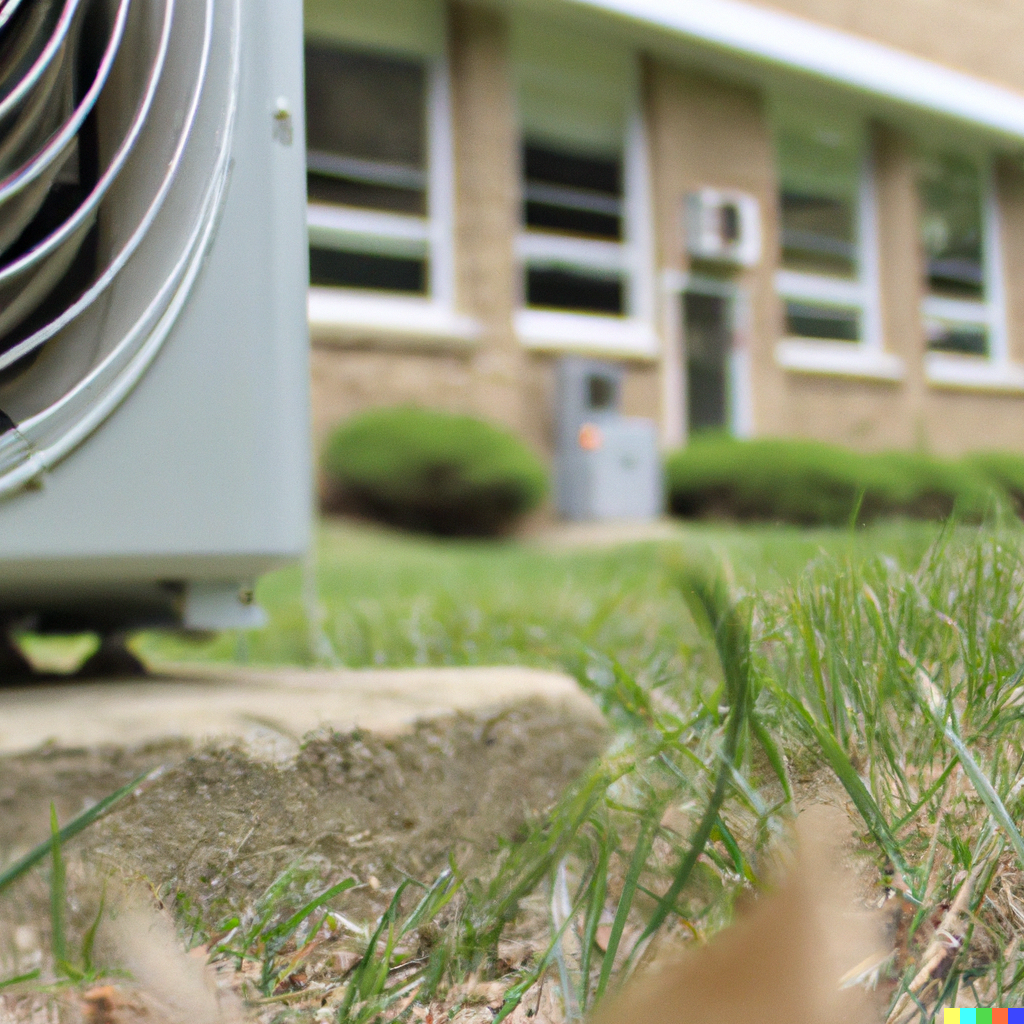No. 8: Install localized heat pumps
No. 8: Install localized heat pumps
Number 8
Installing heat pumps in schools can provide significant environmental and financial benefits by reducing carbon emissions, improving indoor air quality, and lowering heating and cooling costs. This can lead to a more sustainable and comfortable learning environment for students and staff.
Learn why you should do this:
As schools look to become more environmentally sustainable, one key area to consider is their heating systems. One option to explore is the installation of localized heat pumps, which can offer significant environmental and financial benefits.
Localized heat pumps work by extracting heat from the air outside the building and using it to heat the interior. This process is highly efficient and can provide a cost-effective alternative to traditional heating systems. In fact, according to the Department of Energy, heat pumps can save schools up to 50% on their heating bills compared to traditional systems.
One of the key environmental benefits of localized heat pumps is their reduced carbon emissions. Traditional heating systems often rely on fossil fuels, which contribute to greenhouse gas emissions and climate change. Heat pumps, on the other hand, run on electricity and can be powered by renewable energy sources, such as wind or solar power. This can significantly reduce a school’s carbon footprint and help to address the global climate crisis.
In addition to their environmental benefits, localized heat pumps can also provide financial savings for schools. According to a report by the National Renewable Energy Laboratory, schools can achieve an average annual cost savings of $3,000 per heat pump installed. These savings can be reinvested in other sustainability initiatives or educational programs, benefiting both the environment and the students.
Localized heat pumps are also more versatile than traditional heating systems. They can provide both heating and cooling, making them a great option for schools in regions with varying climates. Additionally, because they are installed in individual rooms or areas, they offer greater control over heating and cooling, allowing for personalized comfort and potentially reducing energy waste.
While the upfront cost of installing localized heat pumps may be higher than traditional heating systems, the long-term financial and environmental benefits are significant. The Department of Energy estimates that the cost of operating a heat pump can be up to 60% lower than a traditional heating system. Additionally, there are often financial incentives available for schools to install heat pumps, such as grants or rebates.
It’s also important to consider the health benefits of localized heat pumps. Traditional heating systems can circulate dust and other allergens throughout the building, potentially leading to health issues for students and staff. Heat pumps, on the other hand, use filters to clean the air before circulating it, improving indoor air quality and promoting a healthier learning environment.
In conclusion, installing localized heat pumps in schools can offer a range of environmental, financial, and health benefits. These systems are highly efficient, reducing both carbon emissions and heating bills. They are also versatile, offering both heating and cooling and allowing for personalized control over temperature. While there may be an initial cost to install heat pumps, the long-term savings and benefits make them a worthwhile investment for schools looking to become more sustainable and efficient.
Sources:
- U.S. Department of Energy. (n.d.). Heat Pump Systems. Retrieved from https://www.energy.gov/energysaver/heat-pump-systems
- National Renewable Energy Laboratory. (2015). Geothermal Heat Pumps for Schools: A Case for Installation. Retrieved from https://www.nrel.gov/docs/fy15osti/64293.pdf
- Energy Trust of Oregon. (n.d.). Heat Pumps. Retrieved from https://www.energytrust.org/residential/heat-pumps/
- Green Education Foundation. (n.d.). Advantages of Using Heat Pumps in Schools. Retrieved from https://www.greeneducationfoundation.org/nationalgreenweeksub/waste-reduction-tips/tips-for-schools/advantages-of-using-heat-pumps-in-schools.html

All 100 ideas in one, easy to share ebook. Download now and start helping your school be its best version of itself...
Downloaded over 17,000 times!

More ways to make a difference, now!
No. 38: Engage with an ewaste recycling program
Number 38 An e-waste recycling program can provide environmental and financial benefits to schools by properly disposing of electronic devices and using the funds for community sustainability projects or PTA. Engaging in such programs can reduce the amount of e-waste...
No. 40: Measure your school’s carbon footprint
Number 40 This article explains the importance of measuring a school's carbon footprint and the potential environmental and financial benefits that can result from it. It cites various experts and studies to provide evidence for its claims. Measuring your school's...
No. 34: Use a consolidation service to deliver your goods
Number 34 The use of consolidation services to deliver goods to schools can have significant environmental and financial benefits, reducing transportation emissions and lowering costs. These services combine multiple shipments into one delivery, reducing the number of...





